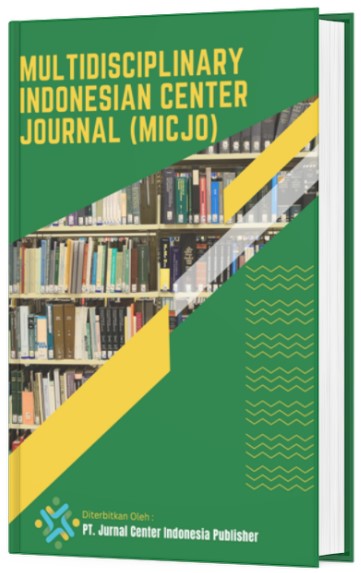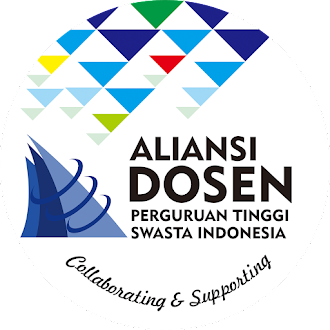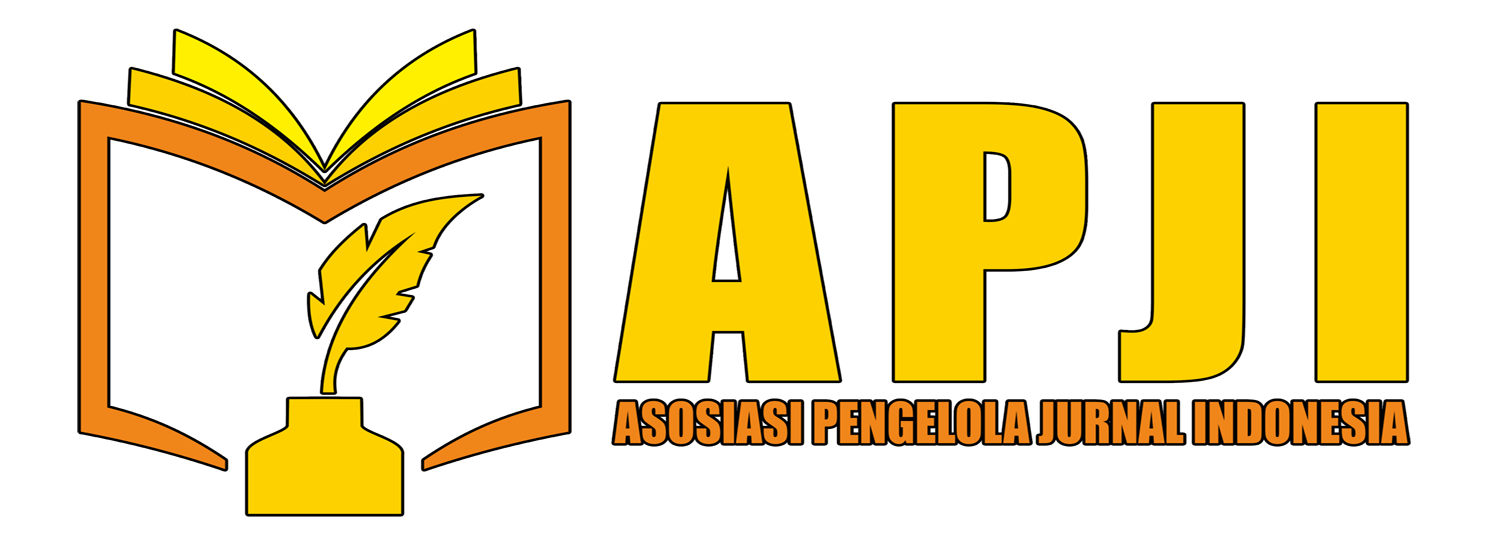THE RELATIONSHIP BETWEEN IRON TABLET CONSUMPTION AND ANEMIA IN PREGNANT WOMEN IN SINTANG REGENCY, WEST KALIMANTAN
DOI:
https://doi.org/10.62567/micjo.v2i3.929Keywords:
Anemia, pregnant women, knowledge, parity, and BAT consumptionAbstract
Anemia is a medical condition where the number of red blood cells or hemoglobin levels in the blood is below normal, which is a protein in red blood cells that functions to carry oxygen from the lungs to the entire body. The prevalence of anemia in pregnant women in Sintang Regency showed that in 2017 there were 116 cases, in 2018 there were 121 cases, and in 2019 there were 164 cases. This research method uses a quantitative analytical approach with a cross-sectional design in Sintang Regency. The population is all pregnant women registered as many as 369 respondents within the scope of the Health Center services in Sintang Regency during the data collection period. The simple random sampling technique was used to select respondents, with a sample size of 192 pregnant women after calculating the population size. The results showed that there was a relationship between knowledge with a p value = 0.000 and OR = 6.900, parity with a p value = 0.000 and OR = 5.040, consumption of iron tablets with a p value = 0.000 and OR = 5.271 with the incidence of anemia in pregnant women in Sintang Regency. The most dominant multivariate test result is knowledge with OR = 7.25 followed by consumption of iron tablets with OR = 4.61 and parity with OR = 4.26. The conclusion related to the incidence of anemia in pregnant women is knowledge, parity, and consuming iron tablets and the most dominant is knowledge and followed by consumption of iron tablets, and parity. It is recommended that pregnant women can improve their knowledge, multi and grandi para pregnant women to comply with consuming iron tablets routinely.
Downloads
References
Araujo Costa, E., & de Paula Ayres-Silva, J. (2023). Global profile of anemia during pregnancy versus country income overview: 19 years estimative (2000–2019). Annals of Hematology, 102(8), 2025–2031.
Aregawi, W. G., Agga, G. E., Abdi, R. D., & Büscher, P. (2019). Systematic review and meta-analysis on the global distribution, host range, and prevalence of Trypanosoma evansi. Parasites & Vectors, 12, 1–25.
Balcha, W. F., Eteffa, T., Arega Tesfu, A., & Abeje Alemayehu, B. (2023). Maternal knowledge of anemia and adherence to its prevention strategies: A health facility-based cross-sectional study design. INQUIRY: The Journal of Health Care Organization, Provision, and Financing, 60, 00469580231167731.
Bekele, W. K. (2019). Food-based strategies to improve iron status of pregnant women: randomized controlled trial.
Benson, A. E., Shatzel, J. J., Ryan, K. S., Hedges, M. A., Martens, K., Aslan, J. E., & Lo, J. O. (2022). The incidence, complications, and treatment of iron deficiency in pregnancy. European Journal of Haematology, 109(6), 633-642.
Benson, C. S., Shah, A., Stanworth, S. J., Frise, C. J., Spiby, H., Lax, S. J., ... & Klein, A. A. (2021). The effect of iron deficiency and anaemia on women’s health. Anaesthesia, 76, 84-95.
Berhe, B., Mardu, F., Legese, H., Gebrewahd, A., Gebremariam, G., Tesfay, K., ... & Adhanom, G. (2019). Prevalence of anemia and associated factors among pregnant women in Adigrat General Hospital, Tigrai, northern Ethiopia, 2018. BMC Research Notes, 12, 1–6.
Bhadra, P., & Deb, A. (2020). A review on nutritional anemia. Indian Journal of Natural Sciences, 10(59), 18466–18474.
Bornstein, M. H., Cote, L. R., Haynes, O. M., Hahn, C. S., & Park, Y. (2022). Parenting knowledge: Experiential and sociodemographic factors in European American mothers of young children. In Parenting Selected Writings of Marc H. Bornstein. Routledge., 195–231.
Btr, E. M. (2023). The Relationship between Parity and Maternal Age with the Incidence of Anemia in Pregnant Women in the Third Trimester at the Novi Lintas Timur Midwife Clinic, Panyabungan District, Mandailing Regency, Natal 2022. Benih: Journal of Midwifery, 2(02), 46–52.
Chai, A. L., Huang, O. Y., Rakočević, R., & Chung, P. (2021). Critical iron deficiency anemia with record low hemoglobin: a case report. Journal of Medical Case Reports, 15, 1–5.
Cyr, M. E., Etchin, A. G., Guthrie, B. J., & Benneyan, J. C. (2019). Access to specialty healthcare in urban versus rural US populations: a systematic literature review. BMC Health Services Research, 19, 1–17.
D’Alessandro, S., Scaccabarozzi, D., Signorini, L., Perego, F., Ilboudo, D. P., Ferrante, P., & Delbue, S. (2020). The use of antimalarial drugs against viral infection. Microorganisms, 8(1), 85.
de Leaniz, C. G., & O’Hanley, J. R. (2022). Operational methods for prioritizing the removal of river barriers: Synthesis and guidance. Science of the Total Environment, 848, 157471.
Deems, N. P., & Leuner, B. (2020). Pregnancy, postpartum and parity: Resilience and vulnerability in brain health and disease. Frontiers in Neuroendocrinology, 57, 100820.
Dehghani, A., Molani-Gol, R., Rafraf, M., Mohammadi-Nasrabadi, F., & Khodayari-Zarnaq, R. (2024). Iron deficiency anemia status in Iranian pregnant women and children: an umbrella systematic review and meta-analysis. BMC Pregnancy and Childbirth, 24(1), 381.
Diana, R., Khomsan, A., Anwar, F., Christianti, D. F., Kusuma, R., & Rachmayanti, R. D. (2019). Dietary quantity and diversity among anemic pregnant women in Madura Island, Indonesia. Journal of Nutrition and Metabolism, 2019(1), 2647230.
Elmardi, K. A., Adam, I., Malik, E. M., Abdelrahim, T. A., Elhag, M. S., Ibrahim, A. A., ... & Kremers, S. (2020). Prevalence and determinants of anaemia in women of reproductive age in Sudan: analysis of a cross-sectional household survey. BMC Public Health, 20, 1–12.
Garnelo, L., Parente, R. C. P., Puchiarelli, M. L. R., Correia, P. C., Torres, M. V., & Herkrath, F. J. (2019). Barriers to access and organization of primary health care services for rural riverside populations in the Amazon. International Journal for Equity in Health, 19, 1–14.
Georgieff, M. K., Krebs, N. F., & Cusick, S. E. (2019). The benefits and risks of iron supplementation in pregnancy and childhood. Annual Review of Nutrition, 39(1), 121–146.
Grand-Guillaume-Perrenoud, J. A., Origlia, P., & Cignacco, E. (2022). Barriers and facilitators of maternal healthcare utilisation in the perinatal period among women with social disadvantage: a theory-guided systematic review. Midwifery, 105, 103237.
Iolascon, A., Andolfo, I., Russo, R., Sanchez, M., Busti, F., Swinkels, D., ... & from EHA‐SWG Red Cell and Iron. (2024). Recommendations for diagnosis, treatment, and prevention of iron deficiency and iron deficiency anemia. Hemasphere, 8(7), e108.
James, A. H. (2021). Iron deficiency anemia in pregnancy. Obstetrics & Gynecology, 138(4), 663–674.
Jiang, L., Tang, K., Magee, L. A., von Dadelszen, P., Ekeroma, A., Li, X., ... & Bhutta, Z. A. (2022). A global view of hypertensive disorders and diabetes mellitus during pregnancy. Nature Reviews Endocrinology, 18(12), 760-775.
Jolly, Y., Aminu, M., Mgawadere, F., & van den Broek, N. (2019). We are the ones who should make the decision”–knowledge and understanding of the rights-based approach to maternity care among women and healthcare providers. BMC Pregnancy and Childbirth, 19, 1–8.
Jose, R., Narendran, M., Bindu, A., Beevi, N., & Benny, P. V. (2021). Public perception and preparedness for the pandemic COVID 19: a health belief model approach. Clinical Epidemiology and Global Health, 9, 41–46.
Juniarti, S., Yuriah, S., & S. (2023). Women’s empowerment model in treatment of pregnant women at risk of anemia in Indonesia: Literature review. International Journal of Health Sciences, 8(S1), 1680–1689.
Karami, M., Chaleshgar, M., Salari, N., Akbari, H., & Mohammadi, M. (2022). Global prevalence of anemia in pregnant women: a comprehensive systematic review and meta-analysis. Maternal and Child Health Journal, 26(7), 1473–1487.
Katenga-Kaunda, L. Z., Iversen, P. O., Kamudoni, P. R., Holmboe-Ottesen, G., & Fjeld, H. E. (2022). Food-based nutrition counselling and education intervention for improved diets of pregnant women in rural Malawi: a qualitative study of factors influencing dietary behaviour change. Public Health Nutrition, 25(9), 2436-2447.
Khan, F. H., Khalid, A. A., Alkwai, H. M., Alshammari, R. F., Alenazi, F., Alshammari, K. F., ... & Batool, A. (2023). The Effect of High Parity on the Occurrence of Anaemia in Pregnant Women. Journal of the College of Physicians and Surgeons--Pakistan: JCPSP, 33(12), 1400-1404.
Khanal, P., Devkota, N., Dahal, M., Paudel, K., & Joshi, D. (2020). Mental health impacts among health workers during COVID-19 in a low resource setting: a cross-sectional survey from Nepal. Globalization and Health, 16, 1–12.
Kinyoki, D., Osgood-Zimmerman, A. E., Bhattacharjee, N. V., Kassebaum, N. J., & Hay, S. I. (2021). Anemia prevalence in women of reproductive age in low-and middle-income countries between 2000 and 2018. Nature Medicine, 27(10), 1761–1782.
Maykondo, B. K., Horwood, C., Haskins, L., Mapumulo, S., Mapatano, M. A., Kilola, B. M., ... & Bitadi, P. M. B. W. (2022). A qualitative study to explore dietary knowledge, beliefs, and practices among pregnant women in a rural health zone in the Democratic Republic of Congo. Journal of Health, Population and Nutrition, 41(1), 51.
Michel, J. B., & Martin-Ventura, J. L. (2020). Red blood cells and hemoglobin in human atherosclerosis and related arterial diseases. International Journal of Molecular Sciences, 21(18), 6756.
Multiansyah, M., Noor, M. S., Fujiati, F., Suhartono, E., & Musafaah, M. (2024). Analysis of Risk Factors for Anemia in Pregnant Women in the Sebabi Health Center Working Area. Journal La Medihealtico, 5(6), 1241–1252.
Nisingizwe, M. P., Tuyisenge, G., Hategeka, C., & Karim, M. E. (2020). Are perceived barriers to accessing health care associated with inadequate antenatal care visits among women of reproductive age in Rwanda? BMC Pregnancy and Childbirth, 20, 1–10.
Nittari, G., Scuri, S., Petrelli, F., Pirillo, I., & Grappasonni, I. (2019). Fighting obesity in children from European World Health Organization member states. Epidemiological data, medical-social aspects, and prevention programs. La Clinica Terapeutica, 170(3), e223–e230.
Obeagu, E. I., & Chukwu, P. H. (2024). Maternal Well-being in the Face of Hypoxia during Pregnancy: A Review. Int. J. Curr. Res. Chem. Pharm. Sci, 11(7), 25–38.
Omena, J., Curioni, C., Cople-Rodrigues, C. D. S., & Citelli, M. (2021). The effect of food and nutrients on iron overload: what do we know so far? European Journal of Clinical Nutrition, 72(12), 1771-1780.
Papageorge, N. W., Zahn, M. V., Belot, M., Van den Broek-Altenburg, E., Choi, S., Jamison, J. C., & Tripodi, E. (2021). Socio-demographic factors associated with self-protecting behavior during the Covid-19 pandemic. Journal of Population Economics, 34, 691–738.
Permatasari, T. A. E., Rizqiya, F., Kusumaningati, W., Suryaalamsah, I. I., & Hermiwahyoeni, Z. (2021). The effect of nutrition and reproductive health education of pregnant women in Indonesia using quasi experimental study. BMC Pregnancy and Childbirth, 21, 1–15.
Pusdekar, Y. V., Patel, A. B., Kurhe, K. G., Bhargav, S. R., Thorsten, V., Garces, A., ... & Hibberd, P. L. (2021). Rates and risk factors for preterm birth and low birthweight in the global network sites in six low-and low middle-income countries. Reproductive Health, 17, 1–16.
Roberts, H., Bourque, S. L., & Renaud, S. J. (2020). Maternal iron homeostasis: effect on placental development and function. Reproduction, 160(4), R65-R78.
Saapiire, F., Dogoli, R., & Mahama, S. (2022). Adequacy of antenatal care services utilisation and its effect on anaemia in pregnancy. Journal of Nutritional Science, 11, e80.
Samson, K. L., Fischer, J. A., & Roche, M. L. (2022). Iron status, anemia, and iron interventions and their associations with cognitive and academic performance in adolescents: a systematic review. Nutrients, 14(1), 224.
Serbesa, M. L., & Iffa, M. T. (2019). Knowledge, attitude and practice on prevention of iron deficiency anemia among pregnant women attending ante–natal care unit at public hospitals of Harar Town, Eastern Ethiopia: institutional based cross-sectional study. Int J Pregn & Chi Birth, 5(2), 48–55.
Shah, T., Warsi, J., & Laghari, Z. (2020). Anemia and its association with parity. The Professional Medical Journal, 27(05), 968-972.
Shi, H., Chen, L., Wang, Y., Sun, M., Guo, Y., Ma, S., ... & Qiao, J. (2022). Severity of anemia during pregnancy and adverse maternal and fetal outcomes. JAMA Network Open, 5(2), e2147046–e2147046.
Shojaeian, Z., Khadivzadeh, T., Sahebi, A., Kareshki, H., & Tara, F. (2021). Perceived risk in women with high risk pregnancy: A qualitative study. Iranian Journal of Nursing and Midwifery Research, 26(2), 168-174.
Smitha, M. V., Indumathi, P., Parichha, S., Kullu, S., Roy, S., Gurjar, S., & Meena, S. (2024). Compliance with Iron-Folic Acid supplementation, associated factors, and barriers among postpartum women in Eastern India. Human Nutrition & Metabolism, 35, 200237.
Stoffel, N. U., von Siebenthal, H. K., Moretti, D., & Zimmermann, M. B. (2020). Oral iron supplementation in iron-deficient women: How much and how often?. Molecular Aspects of Medicine, 75, 100865.
Tamir, Z., Animut, A., Dugassa, S., Belachew, M., Abera, A., Tsegaye, A., & Erko, B. (2025). Plasmodium and intestinal parasite infections among pregnant women at first antenatal care contact in northwest Ethiopia: A study of prevalence and associated risk factors. PLoS ONE, 20(2), e0316483.
Torres, N. F., Chibi, B., Middleton, L. E., Solomon, V. P., & Mashamba-Thompson, T. P. (2019). Evidence of factors influencing self-medication with antibiotics in low and middle-income countries: a systematic scoping review. Public Health, 168, 92–101.
Wemakor, A. (2019). Prevalence and determinants of anaemia in pregnant women receiving antenatal care at a tertiary referral hospital in Northern Ghana. BMC Pregnancy and Childbirth, 19, 1–11.
Yusriani, Y., Alwi, M. K., Herli, A., & Syahrani, V. (2024). Structural equation modeling for skills analysis of health cadres based on knowledge and attitudes about health promotion and body immunity of pregnant women. Journal of Education and Health Promotion, 13(1), 275.
Zafar, D. A. (2021). Iron Supplementation in Pregnancy-The Most Needed But the Most Neglected Element of Antena-tal Care. Archives of Nutrition and Public Health, 3(1), 2.
Zegeye, B., Adjei, N. K., Olorunsaiye, C. Z., Ahinkorah, B. O., Ameyaw, E. K., Seidu, A. A., & Yaya, S. (2021). Pregnant women’s decision-making capacity and adherence to iron supplementation in sub-Saharan Africa: a multi-country analysis of 25 countries. BMC Pregnancy and Childbirth, 21, 1–10.
Downloads
Published
How to Cite
Issue
Section
License
Copyright (c) 2025 Elvi Juliansyah, Yunida Haryanti, Lea Masan, Ria Damayanti

This work is licensed under a Creative Commons Attribution-ShareAlike 4.0 International License.


















